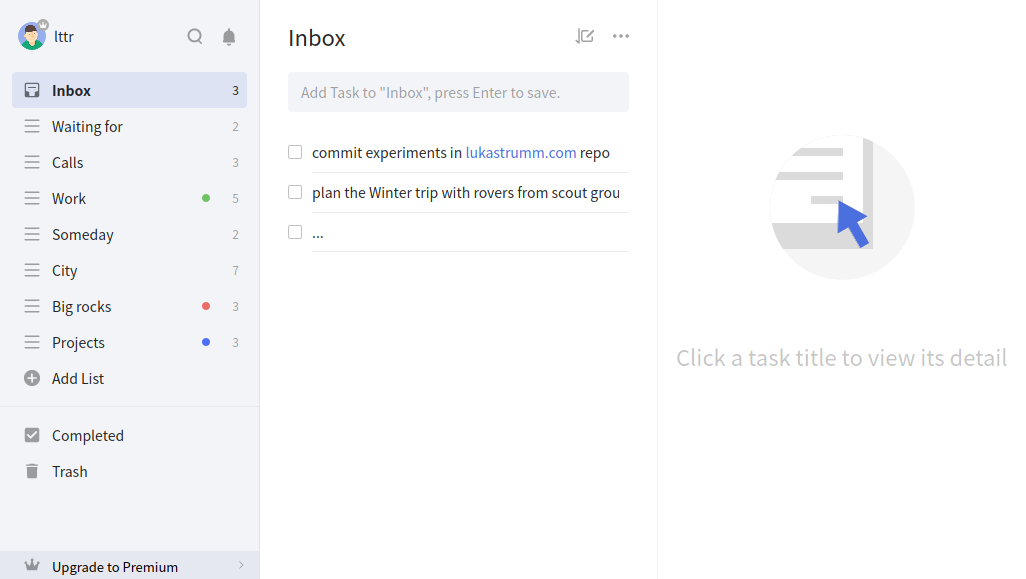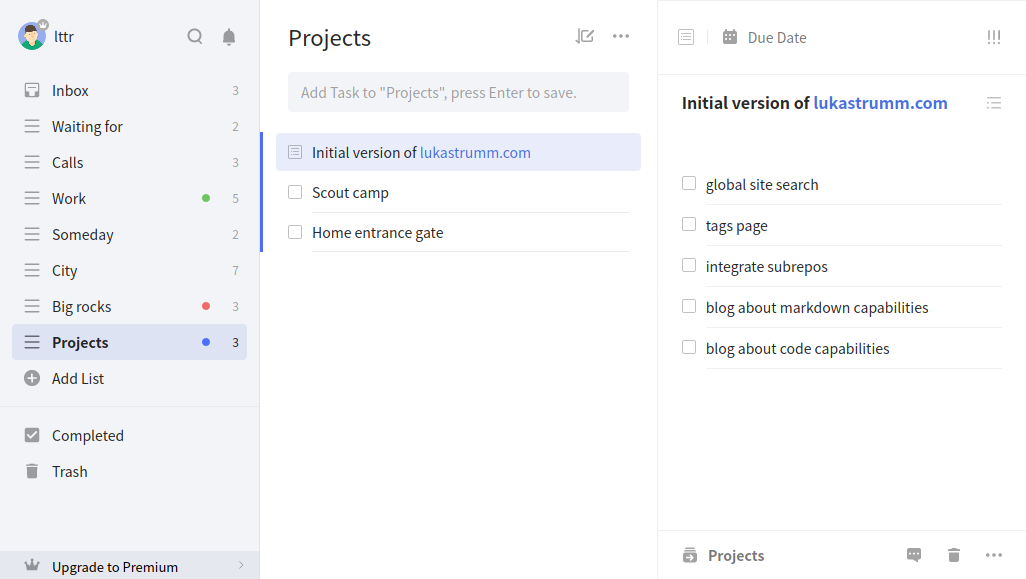For my personal time management I like to use a variant of the Getting Things Done methodology. The nice thing about this GTD thing is that you can use only small parts of the whole methodology and still benefit from it.
I am using some sort of GTD system for about 10 years now. I have tried a couple of time management methodologies and used systems for both paper and digital variants.
My current system is probably very close to ZTD (Zen To Done)[1]. When you are doing something for a long time you usually stick with its core features and fundamentals. And that is what the ZTD is to the GTD.
The core tool
I have been using Wunderlist for several years, but it is going to be discontinued. Microsoft ToDo is its successor, but the feature set and design is a little bit different and I don’t quite like it.
Recently I found TickTick. It is also a multiplatform todo app. It has the advantage that you can customize the menu—namely remove the unnecessary items. It is important when you are looking for a tool, that is simple but has certain features. Primarily I need an Inbox and a couple of specific lists.

Other than that I like the option to create subtasks (for items in Projects list) and the ability to show and hide completed tasks.

Information archive
Another important part of the GTD methodology is some sort of system for storing information. This topic is worth a separate article or maybe a book. To stick with description of the current state of my GTD system I’m only going to say: This website is becoming my information archive and I love it.
The advantages I am currently seeing:
- Writing is simple (in Markdown; a note can be generated with short command line alias)
- Reading is simple (the result is a website)
- Search is simple (my own search from command line or maybe google it)
- Backup and history is built in (everything is in git)
- The output can be plain text or a very interactive thing (because the result is a website)
- Everything is instantly shareable (send a link)
- There is a possibility to integrate other sources of my information (e.g. list of books I have read from Goodreads.com)
Additional tools
I keep various lists in separate app. Those lists are focused more on thinging and helping remember things, not doing things. I use Simplenote. It is truly simple but still have some nice features like history and seamless synchronization. My favorite lists are:
- Things I want to buy (it should be on this list for some time before I actually buy it)
- Possible articles or blog posts
- Inspirational people
- Habits I am currently working on
- Things I should get rid of (sell it)
For more complex projects I use Trello. It is useful for projects where there are multiple tasks in various levels of completeness.
When I need to collect a lot of links, images and other web content I use Google Keep (I have used Evernote before, but it is unnecessarily complex for me).